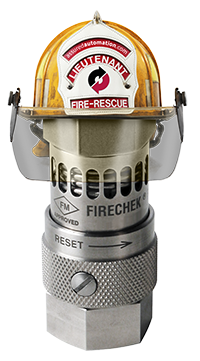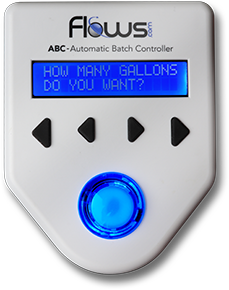Guidelines for Selecting Valve End Connections
The selection of proper valve end connections is driven by the piping specifications of a project. The project piping specifications are dictated by the engineering standards of various recognized technical societies.
These technical societies include:
- ANSI – American National Standards Institute
- API – American Petroleum Institute
- IEC – International Electrotechnical Commission
- ASME – American Society of Mechanical Engineers
- AWWA – American Water Works Association
- BSI – British Standards Institute
- MSS – Manufacturers’ Standardization Society of the Valves and Fittings Industry, Inc.
Below are some of the different types of end connections typically used in piping and valve installations.
_____________________________________________________________________________
NPT = National Pipe Thread Taper
This is a U.S. standard for tapered threads used on threaded pipes and valves. In contrast to straight threads that are found on a bolt, a taper thread will pull tight and therefore make a fluid-tight seal. Pipe tape should be used on the threads to lubricate and ensure a fluid-tight seal.
Note: The 26 Series is a stainless steel NPT threaded end ball valve
Pros:
– very common in U.S.A.
– taper provides very tight seal
– compact and streamline installation
Cons:
– positioning inline components in a specific orientation can be difficult
_______________________________________________________________________________
Socket Weld
The valve simply has a socket with an inner diameter the same as the pipe’s outer diameter. The pipe is inserted into the socket, and is welded around the rim as shown below. Socket weld connections are usually reserved for smaller sizes, typically 2″ and below.
Pros:
– low cost
– eliminates the risk of leakage
– compact and streamline installation
Cons:
– requires a skilled welder for installation
– makes installation permanent, therefore making replacement more difficult
– valves without heat sink may need to be disassembled during installation to avoid damaging seats and seals
__________________________________________________________________________________
Tri-Clamp
Also referred to as tri-clover, t-clamp, or sanitary clamp. These connections use a collar ring that tightens around the flanged ends and squeezes then together with a gasket in between. The squeezing force is created by the wedge shape of the flanges being forced deeper and deeper into the wedge shaped groove in the collar ring. There are various different collar styles including two-segment single hinge (shown below), three-segment double hinge, and two-bolt high pressure.
Pros:
– easy to install and remove for maintenance
Cons:
– added cost due to precision machining and surface polishing required for sanitary certification
________________________________________________________________________________
Glue Socket
Glue socket connections are also referred to a slip-fit, friction fit, pipe end, or spigot connections. They are very simple. The inner diameter of a glue socket connection matches the outer diameter of the pipe, which simply inserts into the socket. PVC cement is used to attach PVC or CPVC valves to PVC or CPVC pipes.
Pros:
– very common
– easy to install
Cons:
– permanent attachment – is not removable (however “true-union” socket weld connections will allow removal of valve – see below)
__________________________________________________________________________________
True-Union
A valve with true union connections uses threaded collars to attach “tail-piece” fittings of any other connection type to the valve. This could be glue socket (slip fittings), flanges, threaded, or even welded. This setup allows for easy removal of the valve without disconnecting the other fitting; once the collars are loosened the valve can be removed.
This connection type is most common on PVC valves. On some valves, it also adds the ability to adjust the tightness of the seats on the ball or replace the seats and/or ball completely.
Note: Our P2 series and PTP series ball valves ship with both NPT and Glue Socket true union connections, with the selected type attached to the valve.
Pros:
– allows for easy removal of valve from pipe
– allows for acces to internals for adjustment of seat/ball tightness or replacement
Cons:
– adds bulk and weight to valve
– collars can vibrate loose if not equipped with the Dual Block collar locking system.
______________________________________________________________________________
ANSI Flange (for ball valves)
The valve has a flanges with bolt holes used to bolt it to matching flanges on the pipe. Flanged connections make removal and replacement easy. Flanged connections are common on larger valve sizes.
There are different class ratings for these flange types: 150, 300, & 600. The higher the number, the higher the pressure that can be handled. The same size flange gets thicker, uses more bolts, and has a larger bolt circle on a class 300 when compared to a class 150. The flange gets even thicker for a class 600. Gaskets must be used where these flanges mate.
Pros:
– easy to install and remove for maintenance
Cons:
– take up more space in pipeline
– can add significant weight on larger sizes
___________________________________________________________________________________
Lugged Flange (for butterfly valves)
The butterfly valve has a flange with tapped bolt holes in the body which are used to attach to matching flanges on the pipe. Flanged connections make removal and replacement easy and allow for a compact installation especially on large diameter valves.
Pros:
– can be installed in “Dead-End” service, where there is no downstream pipeline
Cons:
– higher cost and increased weight when compared to wafer flange connection of the same size
__________________________________________________________________________________
Wafer Flange (for butterfly valves)
The valve has a flange with holes that bolts pass through freely to flanges on both the inlet and outlet pipes. When the nuts on these bolts are tightened, the flanges are pulled together “sandwiching” the valve between them. Flanged connections make removal and replacement easy. Wafer flange connections are used on butterfly valves, where the end-to-end length of the valve is short.
Pros:
– lower cost, lower weight
Cons:
– cannot be used in “Dead-End” service











